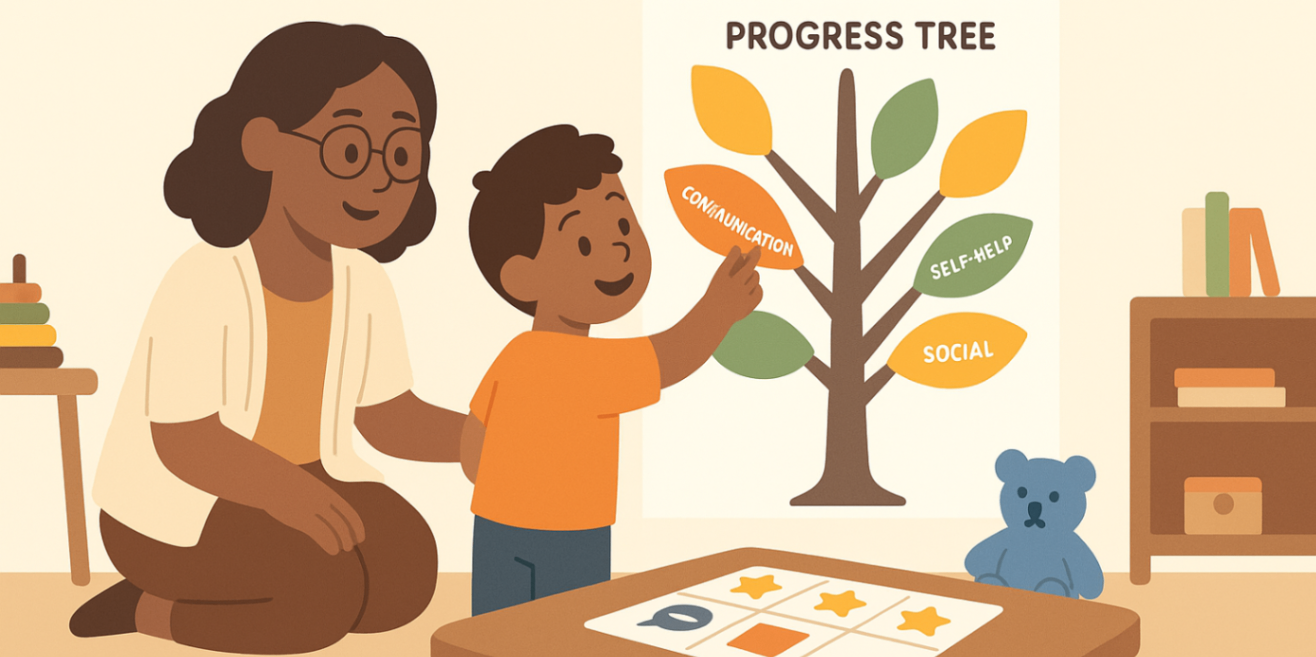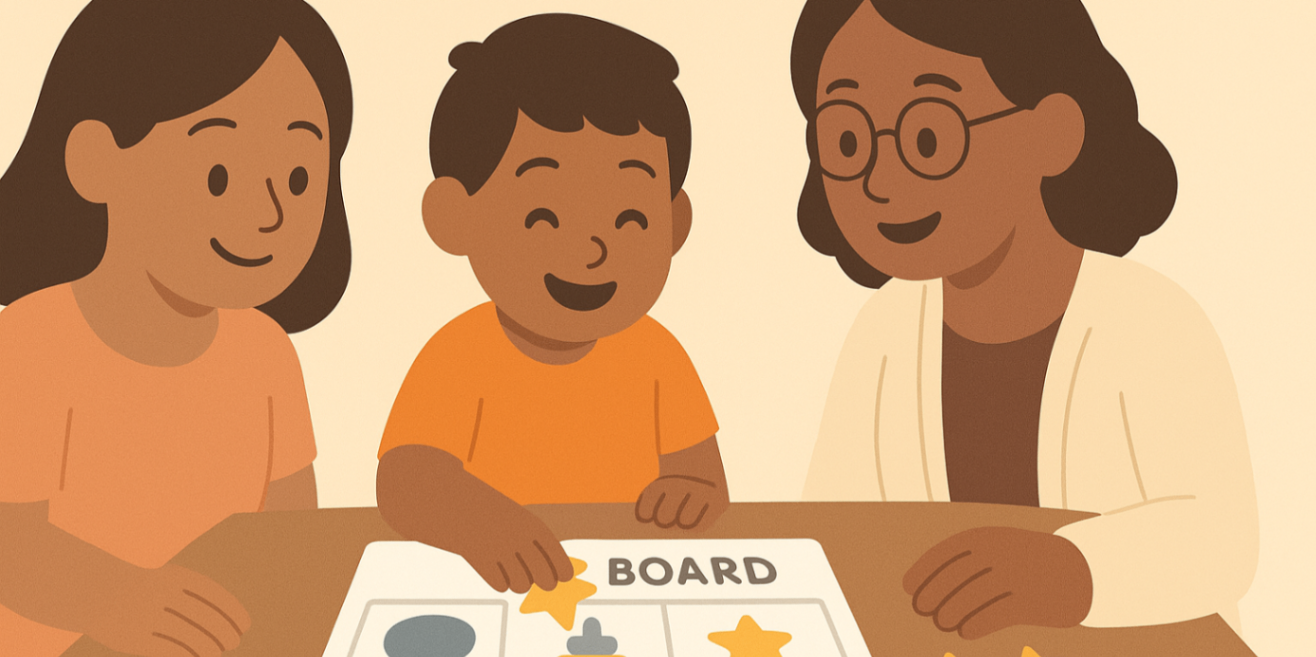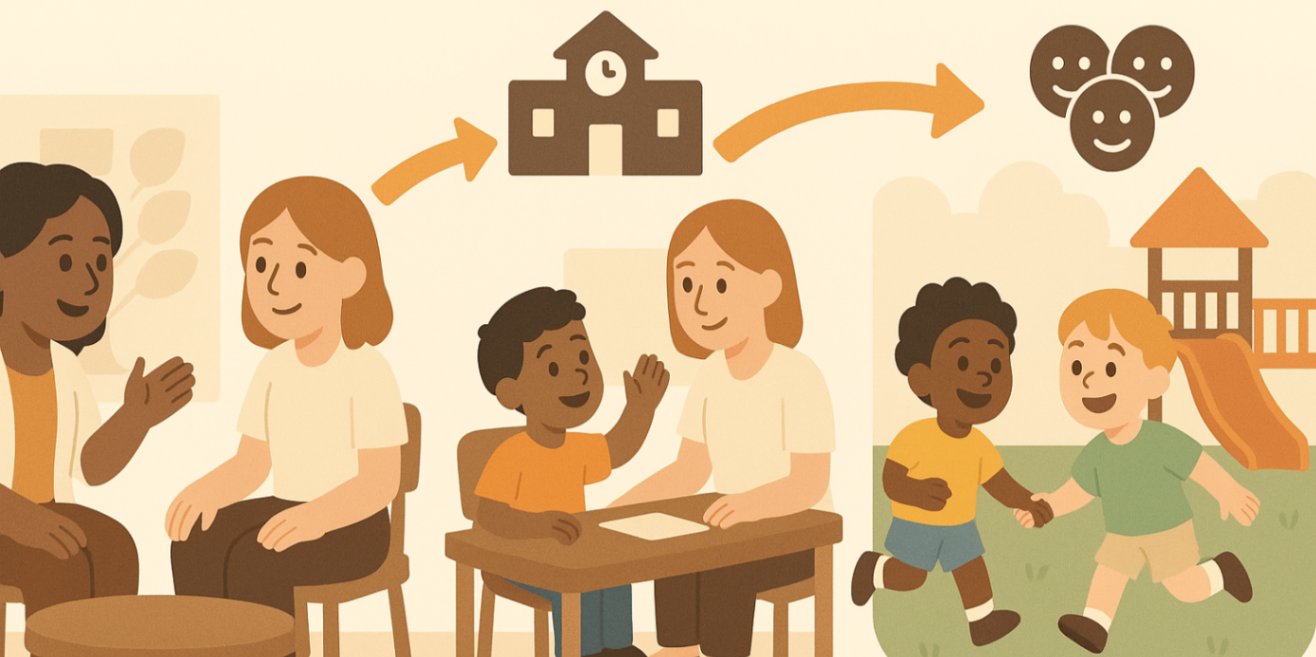
how behaviour therapy for kids with autism supports growth
15 August, 2025
Introduction
Finding the right help for a child with autism spectrum disorder can mean trying several kinds of behavioral therapy. The therapy is made to fit the child’s needs. It helps the child learn to talk better, do daily tasks, and get better at social skills. When families work with therapists, they may see the child do more things on their own and feel better about life. It can also help the child feel good and improve their mental health. Behavioral therapy helps both kids and their parents face problems and feel happy about the child’s steps forward.
Local families want help that fits their needs. A lot of them look for behaviour therapy for kids with autism, so the support is easy to get and made for their child. Many parents in Liverpool look for behaviour therapy in places that work for them, like a clinic, school, or even at home. Getting children behaviour therapy early can really help. It makes things better over time and helps kids use their new skills anywhere.
If you’re new to this topic, explore our parent’s guide behaviour support plans under NDIS.
Key Highlights
-
Behavioral therapy is a key way to support children who have autism spectrum disorder. It helps with daily life, communication, and social skills.
-
Interventions like applied behavior analysis and cognitive behavioral therapy use positive reinforcement. These help a child develop behaviors you want to see and lessen unwanted ones.
-
Therapy plans are made for each child based on their needs, age, and symptoms of autism.
-
Evidence-based practice such as social skills training and play therapy help children be more independent. They also help improve emotional well-being.
-
Parents and caregivers have an important role. They use lessons from therapy in regular life with their children in natural settings. This makes the strategies work even better.
Understanding Behaviour Therapy for Children with Autism

Behavioral therapy helps children on the autism spectrum build important skills. It does this by working with them on the symptoms of autism and helping to grow desired behavior. This kind of therapy looks at problems like trouble talking with others, repetitive behaviors, and issues with social skills. All of these things can get in the way of a child’s daily life. With behavioral therapy, children can get support for these problems and learn to manage them better.
Behavioral therapy helps kids build on their strengths and work on their struggles. It supports mental health and helps guide them to do more things by themselves. With planned steps, children learn to say what they feel, make choices, and join in with daily things.
So, what does behavioral therapy do for kids? How does this help in their everyday life? If you are looking for support, behavior therapy for kids with autism is often suggested. Parent coaching often goes with it. There are local experts giving behavior therapy in Liverpool. They can change programs for school or home. You usually start children's behavior therapy with a meeting. In this meeting, you talk about what you want for your child and what they need.
Learn how Positive Behaviour Support (PBS) is used in tailored programs for children with autism.
Core Principles and Goals of Behaviour Therapy
Applied behavior analysis, also called ABA, is the base for many ways that help children with autism. Behavior analysis is all about knowing why someone does something. Then, it teaches better ways to act. In applied behavior analysis, therapists use positive reinforcement. This means they give praise or rewards when a child does something good, like making eye contact, listening, or telling someone what they need. This helps a child do these things more often. At the same time, they try to stop actions that make it hard to join in daily life.
Each child’s progress is watched all the time, so the way of teaching can change and fit what the child needs. If a child asks for something with words rather than acting out, they may get praise or a small reward. This helps the child see that using words brings good results. It also helps them make these skills part of what they do every day.
The main goal is to help children with autism feel good about themselves, make friends, and handle their feelings in healthy ways. ABA works because it adapts to each child's needs. It helps improve daily living skills, and supports their learning, social life, and behavior for the long term.
How Behaviour Therapy Supports Daily Functioning
Daily living can be hard for kids who have autism. Simple things like dressing, eating, or brushing teeth may feel tough. Behavioral therapy helps by using positive reinforcement. This means giving rewards or praise when kids do a good job. The tasks are split into small steps, so it is easier for them to practice and get better at these activities of daily living. With this help, children can learn skills and use them each day.
In therapy sessions, kids learn how to talk about what they need. They practice how to be with others in the right way. They also get help with changes that come up during the day. Social interactions are often done with both friends and grown-ups. This helps kids get what they need to make friends and take part in their communities.
Behavioral therapy helps children learn basic and more difficult skills. It gets them ready to deal with daily problems. When families use behavioral therapy for kids with autism, they often see kids take part in more routines. A lot of local schools work with behavior therapy Liverpool experts to help kids feel part of the class. When children practice behavior therapy skills in different places, their learning gets stronger.
Types of Behavioural Therapies for Kids on the Autism Spectrum
Children on the autism spectrum may get help from several types of behavioral therapy. These are made to fit their own needs and strengths. The most well-known methods are ABA therapy, cognitive behavioral therapy, and play-based interventions. These therapies focus on shaping behaviors. They help with communication, and build social skills.
ABA is known for the way it brings order to how people change their actions. At the same time, CBT helps people handle what they feel and think. Play therapy and social skills training are also used a lot, mainly with younger children. These tools are good for kids who need help making friends or getting along with others.
Let’s look at these main types more closely to see how they help children on the autism spectrum.
Applied Behavior Analysis (ABA) and Its Effectiveness
Applied behavior analysis (ABA) is a strong way to help children who are on the autism spectrum. This method uses real science to find what works best for each child. A big part of ABA is using positive reinforcement to help the child learn the behaviors you want to see. One thing that makes behavior analysis stand out is that you can use it in natural settings. This helps the child grow social skills and be better at talking with others.
Studies say that starting behavior analysis early and giving it often can help children learn daily living skills. These skills be things they use every day at home and with others. This can make the quality of life better, not just for the child but also for their families. With ABA, you get a plan that fits your child’s needs. This helps them feel good about who they are as they grow.
Cognitive Behavioral Therapy (CBT) for Autistic Children
Cognitive Behavioral Therapy (CBT) is a helpful form of behavioral therapy for autistic children. It works to change thought patterns that can lead to anxiety and trouble in social interactions. This type of therapy gives children ways to cope, so they can deal with their emotions and build good communication skills. CBT helps kids learn more about themselves and practice problem-solving. This helps them use positive behaviors each day, which is very important in social interactions. When family members take part, it helps support the child’s mental health and helps them grow.
Other Evidence-Based Approaches: Social Skills Training and Play Therapy
Social skills training and play therapy can help children on the autism spectrum along with ABA and CBT. Social skills training is often done in small groups. The goal is to teach kids fundamental social skills. In these practice groups, children learn through clear teaching, watching others, and joining in practice time. They are shown how to read nonverbal cues. The practice also helps them start conversations and build friendships.
Play therapy helps kids talk, work together, and solve problems by using special play activities. It works well for young children or those who learn better by doing things with their hands. Play therapy can help them get better at making friends and doing activities of daily living.
Key features include:
-
Direct teaching and practice help kids learn social skills.
-
Play-based ways are used to help kids with joint attention and language.
-
There is a focus on relationship development intervention to help build strong bonds.
-
Support for daily living skills is given through fun and hands-on tasks.
Techniques that Foster Social Skills Development

Building social skills is something many families focus on when they have kids with autism. Some important social skills, like looking someone in the eye, reading facial expressions, and talking with friends, can be hard for these kids. Behavioral therapy helps by teaching these basic social skills in a way that is simple and easy to follow. It uses steps that are clear and are used each time in the same way.
Structured interventions like joint attention exercises, group work, and social communication games help children practice new things in a safe space. These ways can build trust in what the kids do and help them feel better about talking and spending time with other people. This makes it easier for them to have stronger and more real friendships with others.
Let’s take a closer look at some good ways to build strong social skills.
Structured Social Skill Groups
Structured groups that teach social skills give a safe place for kids with autism. Here, children can learn and practice important social skills. In the group, they do things made to feel like real social interactions. This helps them get better at talking and working with other kids.
Sessions are led by therapists who show kids what to do, use role-play, and provide pictures to help teach skills. These skills include sharing, taking turns, and learning the rules in groups. The children get feedback and support from the therapist and other kids. This way, everyone helps each other and the learning is more fun and active.
Key benefits of structured social skill groups:
-
Focused practice helps children have the important social interactions they need.
-
Every child gets feedback that matches their own progress.
-
Kids get chances to build friendships in a setting that is supportive.
-
Group activities help reinforce positive behaviors for everyone.
Role-Playing and Peer Interaction Strategies
Role-playing helps children learn good ways to act and change things they do that are not right. It is useful for kids with autism. In role-playing, kids step into real-life situations with others. They practice saying the right words and talking with other kids. This helps them feel more sure when they talk and gives them a way to use positive behaviors instead of inappropriate responses.
When kids practice something many times, they feel better about it. They get used to things like saying hello to someone, joining a game, or dealing with problems. Therapists help them with these things. They use positive reinforcement and give kind help when needed. This helps kids feel sure of what they can do and teaches them new skills.
Peer interaction strategies are about putting children together who have the same interests or are at the same level of development. This way, they can talk and learn from each other in real-time. These strategies help the children take what they learn in therapy and use it at school, home, and out in the community.
What Parents Can Expect from Behaviour Therapy Sessions
When a child starts behavioral therapy, parents can see that the plan is made to fit the child's needs. In the first sessions, the therapist will take time to get to know the child. They do a full check to understand what the child finds hard and what they do well. After that, they work on goals that match the child's strengths and what they need help with. They keep track of how things are going in every session. This helps make sure that the therapy keeps working and meets the child's needs.
Parent involvement plays a big role in how well behavioral therapy works. Therapists keep families updated and share tips they can use at home. This way, the child’s progress happens not only with the therapist but also in other places and through day-to-day routines. Working together helps the child do well in many areas.
Next, we will talk about how assessment and collaboration work when you use them.
Assessment, Progress Monitoring, and Individualisation
Professionals start behavioral therapy with a close look at the child’s needs. They check things like social communication, everyday skills, and symptoms of autism. This checkup is used to find out what areas need support. After this, they set clear goals that fit the child’s skills and what is most important for the child. This plan helps make sure that the therapy works well for each child.
Ongoing progress checks are important to see how your child grows. The therapist may watch your child, ask you as a parent for your thoughts, and use special tools or tests. These things help them see what works and what needs to change. For example:
-
Setting goals for each child based on what we find in the assessment
-
Using both numbers and words to track how well things are going
-
Changing plans as the child grows and learns new things
-
Making sure parents and teachers are part of the feedback, so everything stays the same and works well
This process helps the therapy plan stay matched to what the child needs as they grow and change. It can make a big difference in how well the plan works for them.
Collaboration Between Therapists, Parents, and Caregivers
A close partnership between therapists, parents, and caregivers is really important for good behavioral therapy. The family members help a lot by sharing details about daily life, what the person likes, and how the days usually go. All this information helps therapists make interventions fit better for the person.
Working together goes beyond what happens in the therapy room. Parents and caregivers are asked to use different ideas at home, help the child do good things, and talk often with therapists about how things are going or if there is something new to work on. Regular routines, such as giving the child pictures to help know what comes next, letting them pick between things, or using positive reinforcement when they do positive behaviors, can help to make the therapy time work better.
According to Temple Grandin, “Parents and professionals must work together as a team to support real learning and growth.” When parents and professionals work as a team, kids get steady support. Their families feel strong and able to help their child do well. This way helps everyone have the same goal for the child’s success.
Conclusion
In the end, behavior therapy helps children with autism grow and learn. Therapies like applied behavior analysis (ABA) and cognitive behavioral therapy (CBT) use tested methods. These help children live better every day and build good social skills.
Parents can get personalized plans that fit their child's needs. The sessions are structured and focus on working together and checking progress. As caregivers, your role matters a lot. You help your child practice what they learn in therapy when they are at home.
If you’d like a personalised plan for your child, our behaviour support team at daar can help turn goals into practical steps. Book consultation now.
Frequently Asked Questions
Are behavior therapy approaches tailored to different age groups of autistic children?
Yes, behavioral therapy is made to fit each age group on the autism spectrum. It gives early intervention for young children, focusing on the needs they have at that time. Older children and teens get programs made for their age. These plans work with the stage they are in and the goals they want to reach. Every child gets therapy tuned to their own needs so that it is useful for their development.
What can caregivers do at home to reinforce behavior therapy strategies?
Caregivers and family members can help a lot by using positive reinforcement and showing the desired behavior. The best way is to set up simple routines in natural settings. It is good to practice new skills at home. Make sure you celebrate every small success. Try to be consistent with the strategies used in each session. These things together can really help make a big difference.
How do professionals determine which behavioral therapy is most suitable for a child with autism?
Professionals use careful tests to see the symptoms of autism. They also look at the child’s strengths and challenges. They use a behavioral analysis to understand what is going on. They watch the child’s progress closely. Based on this, they recommend the type of therapy that is best. This way, the therapy fits the child’s needs and the situation.
.svg)






